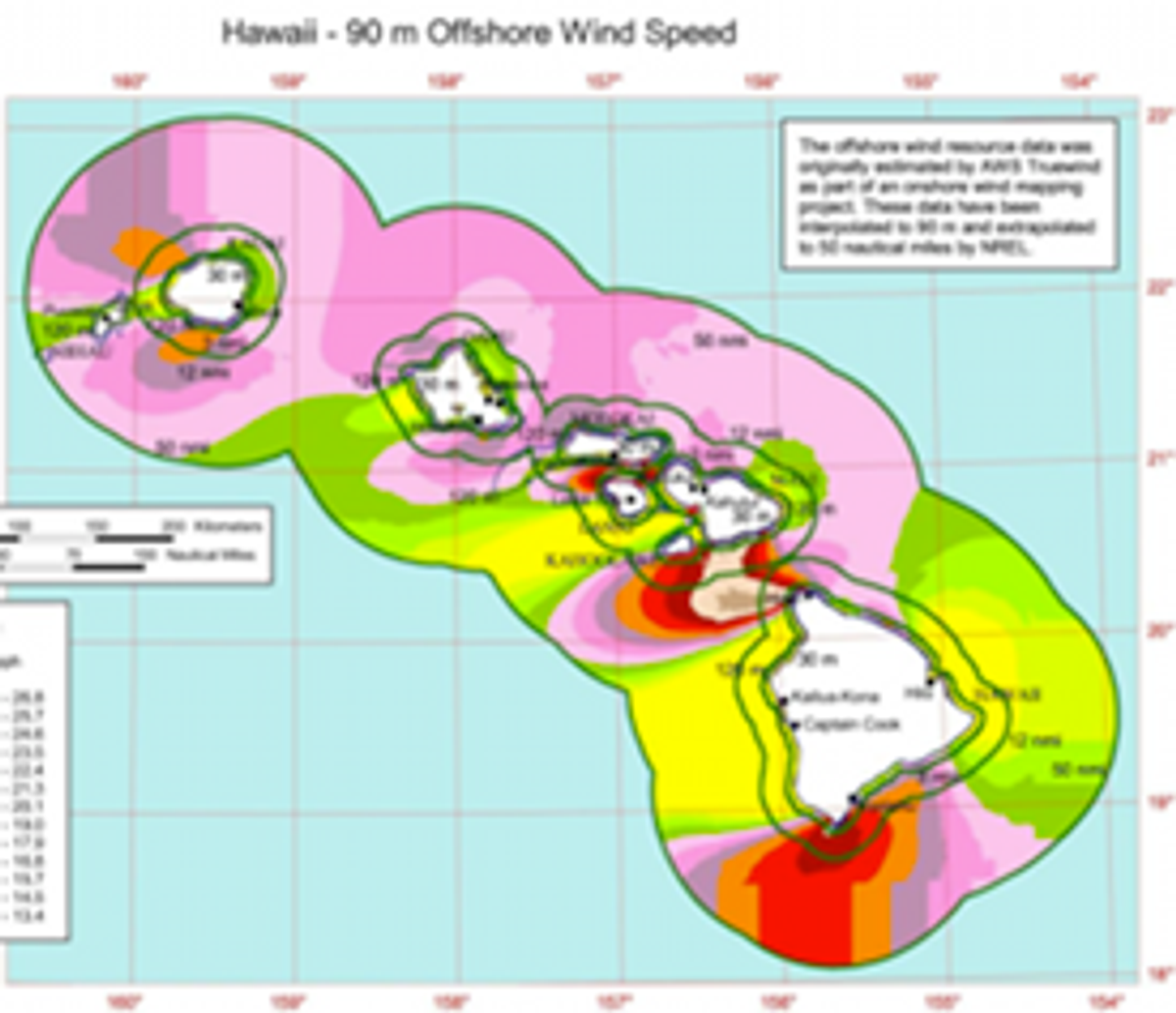The United States boasts an embarrassment of riches when it comes to offshore wind potential.
According to a report released by the Department of Energy's National Renewable Energy Laboratory, the US maxes out at 4,150.3 gigawatts of offshore generating capacity. In 2008, the entire country's electricity generating capacity barely topped 1,000 gigawatts.
Of course, determining the total potential has very little to do with what can or will actually be built, and if the past is any indicator of future performance (it isn't, especially in this case, but still) then we will take advantage of precisely zero of those gigawatts. But still, it is heartening to know that if a strong will develops aimed at plumbing the amazing depth of the offshore energy potential, there will be no lack of places to put the turbines.
The NREL calculated that massive gigawatt number using average wind speeds at 90 meters above sea level from shorelines out to a maximum of 50 nautical miles. The 4,150.3 GW takes up more than 830,000 square kilometers of ocean and Great Lakes; more than 127,000 of those surround Hawaii, which comes in just ahead of California in total capacity, at 637.4 GW. Even tiny Rhode Island could swing 25.6 GW, ahead of several other coastal states.
This is no indicator of where the industry is actually heading, and the NREL itself admits that the analysis "does not consider that some offshore areas may be excluded from energy development on the basis of environmental, human use, or technical considerations." But as Cape Wind and various projects off the coasts of Rhode Island, New Jersey and elsewhere slog forward, and as technology also marches apace (floating turbines, anyone?), perhaps some of those gigawatts flying around the US shores might start heading inland soon.
(Image via NREL)
Dave Levitan is the science writer for FactCheck.org, where he investigates the false and misleading claims about science that U.S. politicians occasionally make.



